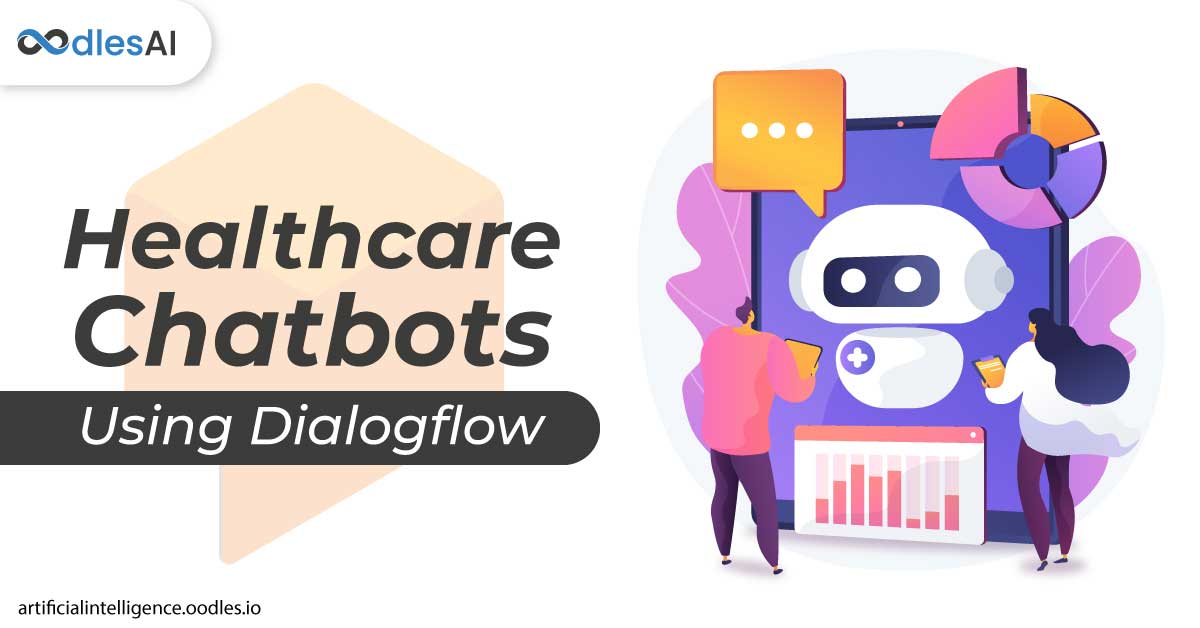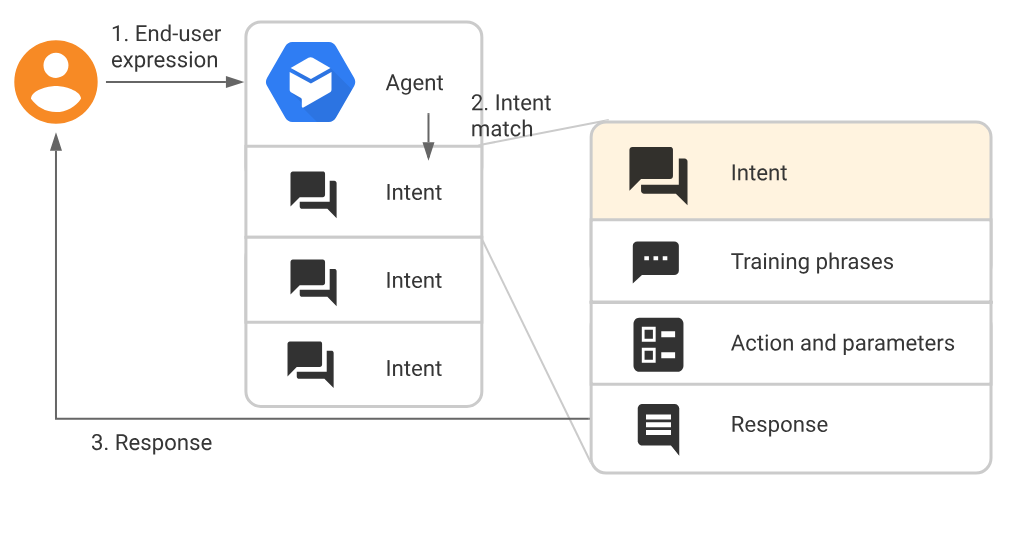Healthcare Chatbot Development With Dialogflow: Reshaping Diagnosis
Sanam Malhotra | 4th February 2020

Artificial Intelligence (AI) is transforming the way traditional services are delivered to the masses. With advancements in machine learning algorithms, chatbot development frameworks such as Dialogflow are automating critical customer interactions efficiently. Chatbot development with Dialogflow facilitates meaningful interactions across platforms and devices while supporting multiple languages. The ease of using Dialogflow is making it a breakthrough framework among the providers of chatbot development services.
Let’s closely evaluate the nuts and bolts of Dialogflow to build an effective healthcare chatbot for diverse patient needs.
How to build Healthcare Chatbots with Dialogflow
Chatbot development with Dialogflow requires training of virtual agents or bots to handle conversations with patients. For this purpose, Google offers Dialogflow Console wherein businesses can create and fine-tune healthcare chatbots to understand symptoms, diseases, and patient responses. However, developers can also opt for Dialogflow API to build advanced and domain-specific chatbots.
In this article, we are focusing on Dialogflow Console that combines AI development services to render a healthcare chatbot. Training of healthcare chatbots with Dialogflow Console encompasses four major engines, i.e. intents, entities, contexts, and fulfillment. Here’s how these elements work-
1) Intents
Intents categorize a user’s or patient’s intention during a single thread of conversation with a chatbot. For instance, “What should I do if I feel feverish?” or “What is the best medicine to cure a sore throat?”
Dialogflow agents use built-in machine learning algorithms to parse through patient inputs and extract actionable data to provide accurate responses. A basic intent constitutes training phrases, actions, parameters, and responses that enable Dialogflow to match a patient’s expressions with the closest intent.

2) Entities
Each parameter extracted from a patient’s input is categorized under a certain entity type. Tracing the above example, if a user prompts-
“What medicine is preferred to cure a sore throat?”
The entity type functionality in Dialogflow enables us to determine the information to extract from the above input, i.e. medicine. The next step is to add entity entry to provide a set of words that we consider equivalent to the entity type medicine, such as-
(i) Paracetamol, Aspirin
(ii) Honitus, Corex
We can also use several entity options like map, list, compose, and regexp entities to customize entity matching and response generation.
3) Contexts
Dialogflow contexts mirror our natural language context by understanding the condition and circumstances surrounding a patient’s expressions. Suppose a patient prompts,
“Tell me about my doctor’s appointment”
Dialogflow matches the patient’s input to the CheckingInfo intent that activates checking output context. Resultant, the healthcare chatbot asks the patient about the type of information needed,
“What information do you need regarding your doctor’s appointment?”
Patient- “The schedule”
Here, Dialogflow matches the instruction to the CheckingBalance intent that contains checking input context to send the correct response,
“Your appointment with Dr. Stephen is scheduled tomorrow at 12pm”
4) Fulfillment
Using fulfillment for intent mapping enables the healthcare chatbots to exhibit dynamic response capabilities. With fulfillment enabled, Dialogflow responds to the intent by a pre-defined service.
For instance, a patient’s request to “schedule a doctor’s appointment on Thursday” activates Dialogflow to send a webhook request to a business service. It is similar to an API call wherein a business service checks the availability information on Thursday in the database. Thereafter, the business service sends a webhook response to Dialogflow,
“Yes, on Thursday, you may book an appointment anytime between 12pm to 3pm.”
Here’s a tip, in case your healthcare chatbot cannot attach fulfillment to intents, Dialogflow automatically uses static responses to complete the request.
Also read- Improving Diagnostics with AI-powered Predictive Analytics in Healthcare
Healthcare Chatbot Development and Application with Oodles AI
AI is reinventing the healthcare industry with automated treatment and advanced communication solutions. The artificial intelligence team at Oodles recently built a healthcare chatbot using Dialogflow. The bot is integrated into Skype and facilitates text-based medical assistance to patients for-
a) Identifying symptoms of common diseases such as fever, cold, etc.
b) Getting first aid or medicines for the common symptoms.
c) Consulting a doctor or physician.
d) Booking an appointment with a department-specific doctor.

The chatbot runs on machine learning development services to map user expressions with pre-defined intents with over 80% accuracy achieved. Our AI team aims to turn the health bot into a self-learning chatbot that trains the model itself using diverse user inputs. Our experiential knowledge in deploying Dialogflow to build function-specific chatbots extends to eCommerce, retail, and marketing and other business models.
Talk to our AI experts to learn more about our chatbot development services.



